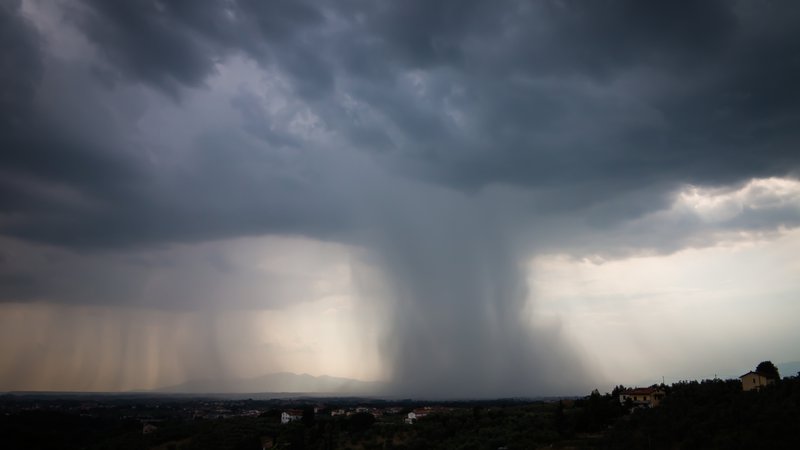June to September 2025 Seasonal Forecast: Above-Normal Rainfall Expected Across Most Parts of the Greater Horn of Africa

20th May 2025, Addis Ababa, Ethiopia: The IGAD Climate Prediction and Applications Centre (ICPAC) has released the official seasonal climate outlook for the June to September (JJAS) 2025 rainfall season over the Greater Horn of Africa (GHA). The forecast indicates a high likelihood of above-normal rainfall across much of the northern parts of the region. The forecast was issued during the 70th Greater Horn of Africa Climate Outlook Forum (GHACOF 70).
JJAS is a critical rainy season for countries in the northern and western parts of the GHA. It contributes to over 50% of annual rainfall over the northern parts of GHA region, and more than 80% in most parts of Sudan, making the seasonal forecast particularly significant for early action and planning in sectors such as Agriculture and food security, water resources, disaster risk reduction, and in other climate-sensitive socio-economic sectors.
Key Highlights of the JJAS 2025 Outlook:
- There is a 55% probability of above-normal rainfall over central Sudan, eastern South Sudan, northern and southwestern Ethiopia, western Kenya, and eastern Uganda. Additionally, western Uganda, South Sudan, southern Sudan, Djibouti, and western Eritrea are expected to experience wetter-than-average conditions (approx. 45% probability).
- Conversely, there is a high chance of below-average rainfall over the coastal areas of Somalia and Kenya, northwestern South Sudan, and southeastern Ethiopia.
- The onset of rains is likely to be normal over most parts of the region, with a few regions that are expected to have an early onset. However, in parts of western Ethiopia, a delayed onset is more probable.
- Southern GHA countries such as Tanzania, Rwanda and Burundi are expected to remain mostly dry, as JJAS is typically not their main rainy season.
- The temperature forecast shows a likelihood of warmer-than-average conditions over much of the region, with higher probabilities over southern Ethiopia and Somalia, eastern Kenya, and northern Sudan. Conversely, average to below-average temperatures are expected over the IGAD-Karamoja cluster, Djibouti, Eritrea, central Sudan, and northeastern Ethiopia.
While wetter conditions bring opportunities for agriculture and water access, they also raise the risk of flooding and waterborne diseases. ICPAC urges regional and national authorities to take proactive measures to prepare and respond effectively.
H.E. Mr. Mohamed Ware, Deputy Executive Secretary of IGAD, emphasised the urgency of collective action, stating: “The Greater Horn of Africa is experiencing unprecedented climate extremes, ranging from droughts and floods to unpredictable rainfall, putting our food systems, water resources, and livelihoods at serious risk. We must institutionalise climate services and work together across borders and sectors to ensure climate risks are integrated into every decision. The future of our region depends on it.”
H.E. Dr. Eng. Habtamu Itefa, Minister of Water and Energy of the Federal Democratic Republic of Ethiopia, highlighted the need for continued investment: “We must continue to invest in and expand systems capable of generating knowledge-based, user-tailored climate information. This is essential for guiding policy decisions and reaching grassroots communities most vulnerable to climate risks.”
Dr. Abdi Fidar, the Officer in Charge at ICPAC, highlighted the significance of GHACOF as a regional platform:“GHACOF continues to be a leading platform in our region where climate experts, decision-makers, and stakeholders co-produce and share actionable climate information that shapes preparedness and response at national and regional levels.”
In line with recommendations from the World Meteorological Organisation (WMO), ICPAC has implemented an objective seasonal forecasting procedure to generate the JJAS 2025 climate outlook for the Greater Horn of Africa.
-End-
This press release is also available in: French
Access the GHACOF 70 Technical Statement
Note to Editors:
GHACOF 70 was convened as a hybrid event from 19–20 May 2025 by ICPAC, in collaboration with National Meteorological and Hydrological Services (NMHSs) and regional partners. The primary objective of the forum was to issue the seasonal forecast for the June to September 2025 rainfall season.
ICPAC will continue to provide regular updates and technical advisories throughout the season. NMHSs will offer downscaled, localised forecasts and sector-specific guidance to support governments, humanitarian agencies, and communities in planning and response. We encourage media and climate information users to consult our weekly and monthly updates at www.icpac.net and to liaise directly with their respective NMHSs for location-specific forecasts.
For media interviews and requests, please contact:
Paula Machio: +254 746 511 941 | paula.machio@igad.int
Emebet Jigssa: +254 748 108 077 | emebet.jigssa@igad.int
Edwin Kiplagat: +254 724 874 765 | edwin.kiplagat@igad.int
